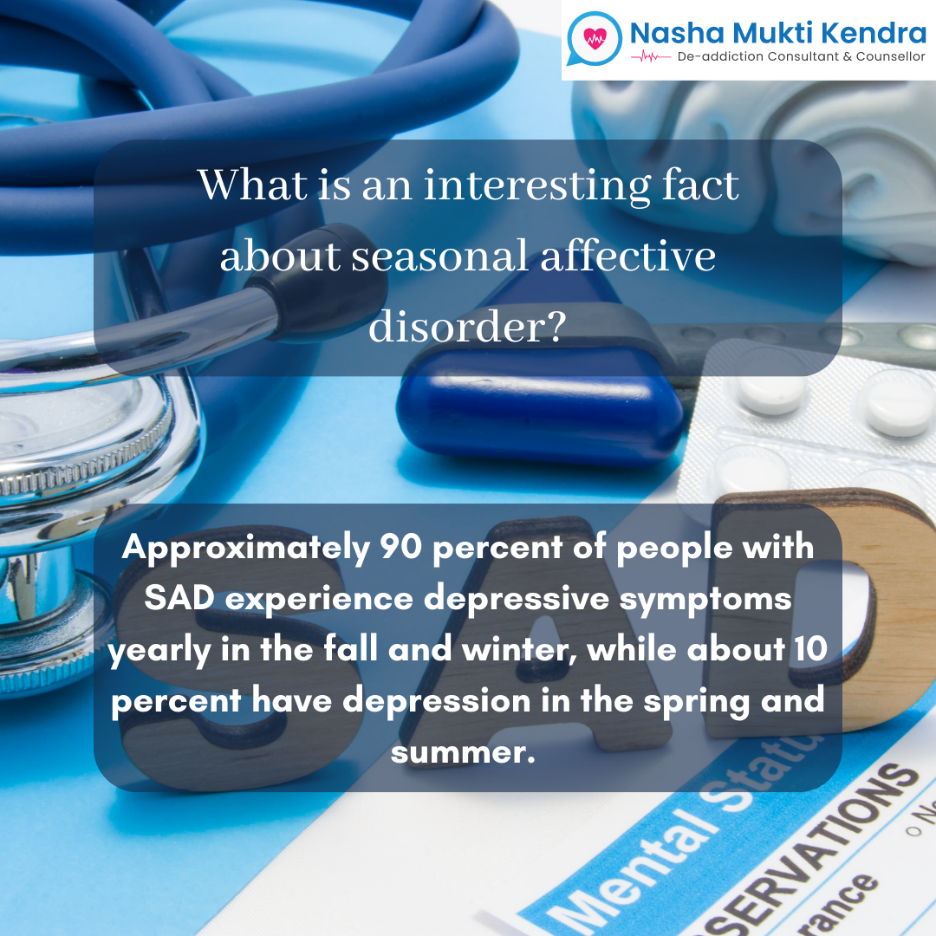Seasonal Affective Disorder (SAD) is a type of depression that follows a seasonal pattern, typically occurring during specific times of the year. While most commonly associated with the winter season, known as Winter SAD, it is important to recognize that SAD can also affect individuals during the spring and summer months, commonly referred to as Spring and Summer SAD. In this blog, we will delve into the definition of Seasonal Affective Disorder, explore its symptoms, and shed light on the unique characteristics of spring and summer SAD.
What is Seasonal Affective Disorder?
Seasonal Affective Disorder is a recurrent mood disorder characterized by the onset of depressive symptoms that occur in a seasonal pattern, usually during fall and winter. It is believed to be related to changes in natural light, which can disrupt the body’s internal clock and negatively affect neurotransmitters in the brain, such as serotonin.
The Prevalence of Seasonal Affective Disorder
SAD is estimated to affect approximately 5% of the population in the United States, with a higher prevalence in regions located farther from the equator. Winter SAD is the most common form, but it is crucial to acknowledge the existence of spring and summer SAD as well.
Symptoms of Seasonal Affective Disorder
Common Symptoms
The symptoms of Seasonal Affective Disorder are similar across all seasons, but the timing and severity may vary. Common symptoms include:
- Persistent feelings of sadness, hopelessness, or low mood
- Fatigue and decreased energy levels
- Changes in appetite, including increased craving for carbohydrates
- Difficulty concentrating and making decisions
- Social withdrawal and decreased interest in activities previously enjoyed
- Sleep disturbances, such as oversleeping or insomnia
Symptoms Specific to Spring and Summer SAD
While winter SAD is well-known, spring and summer SAD can present unique symptoms due to the contrasting characteristics of these seasons. Some symptoms specific to spring and summer SAD include:
- Anxiety and irritability
- Restlessness and agitation
- Insomnia or difficulty maintaining regular sleep patterns
- Decreased appetite and weight loss
- Increased sensitivity to heat and humidity
- Understanding Spring and Summer SAD
Understanding Spring and Summer SAD
Factors Contributing to Spring and Summer SAD
Spring and summer SAD are thought to be linked to different factors than their winter counterpart. One prominent theory suggests that longer daylight hours during these seasons can disrupt the circadian rhythm and sleep patterns, leading to mood disturbances. Additionally, for individuals sensitive to heat and humidity, the discomfort caused by warmer weather can exacerbate depressive symptoms.
Differentiating Spring and Summer SAD from Other Conditions
Spring and summer SAD can sometimes be mistaken for other mood disorders or general fatigue related to the change in seasons. However, understanding the unique symptoms and seasonal pattern of SAD can help differentiate it from other conditions and facilitate appropriate treatment.
Coping Strategies and Treatment Options
Self-Help Strategies
Individuals with spring and summer SAD can employ several self-help strategies to alleviate symptoms, such as:
- Maintaining a regular sleep schedule
- Exposing oneself to natural light, especially in the morning
- Engaging in regular physical exercise
- Practicing stress management techniques, such as meditation or deep breathing exercises
- Establishing a support network and engaging in social activities
Professional Treatment Options
When self-help strategies are insufficient, seeking professional treatment is crucial. Treatment options for spring and summer SAD may include:
Light therapy: Light therapy involves exposure to artificial light that mimics natural sunlight. This treatment can help regulate the body’s internal clock and alleviate depressive symptoms.
Psychotherapy: Cognitive-behavioral therapy (CBT) and other forms of psychotherapy can be effective in managing SAD. Therapists can help individuals identify negative thought patterns and develop coping strategies to improve their mood and overall well-being.
Medication: In some cases, doctors may prescribe antidepressant medication to help regulate brain chemicals and alleviate symptoms. It is important to consult with a healthcare professional to determine the most suitable medication and dosage.
Lifestyle modifications: Making certain lifestyle changes can also contribute to managing spring and summer SAD. These may include maintaining a balanced diet, getting regular exercise, practicing relaxation techniques, and ensuring adequate sleep.
Seeking Support and Raising Awareness
It is important for individuals experiencing spring and summer SAD to reach out for support from loved ones, friends, or support groups. Sharing experiences and feelings with others who can relate can provide valuable emotional support.
Raising awareness about SAD, including its spring and summer variants, is essential to reduce the stigma associated with mental health conditions. Education and open conversations can help individuals recognize the signs and symptoms, seek appropriate help, and access the necessary support and resources.
Seasonal Affective Disorder (SAD) is a type of depression that follows a seasonal pattern. While Winter SAD is more widely recognized, it is important to understand that SAD can also occur during the spring and summer months, presenting its unique set of symptoms. Recognizing the symptoms and understanding the impact of spring and summer SAD is crucial for timely diagnosis and appropriate treatment. By implementing self-help strategies, seeking professional treatment, and raising awareness, individuals can effectively manage their symptoms and improve their overall well-being. Remember, support is available, and you are not alone in your journey to overcome spring and summer SAD.
Why choose Nasha Mukti Kendra for SAD treatment?
Nasha Mukti Kendra is one of the leading rehabilitation centres in the country. People choose Nasha Mukti Kendra because of the quality treatment we give. Our clinical psychologists treat people who are suffering from many mental illnesses. We have got the best-certified therapist who is always available whenever you need them. We also offer American-based therapy to all our patients, which helps to recover faster. Our team also helps patients with post-recovery. If you compare the recovery rating with other rehabilitation centers, you will see the difference, as we have the highest recovery rate. Get help from us if you are in need, as we have our centres all over the world.
